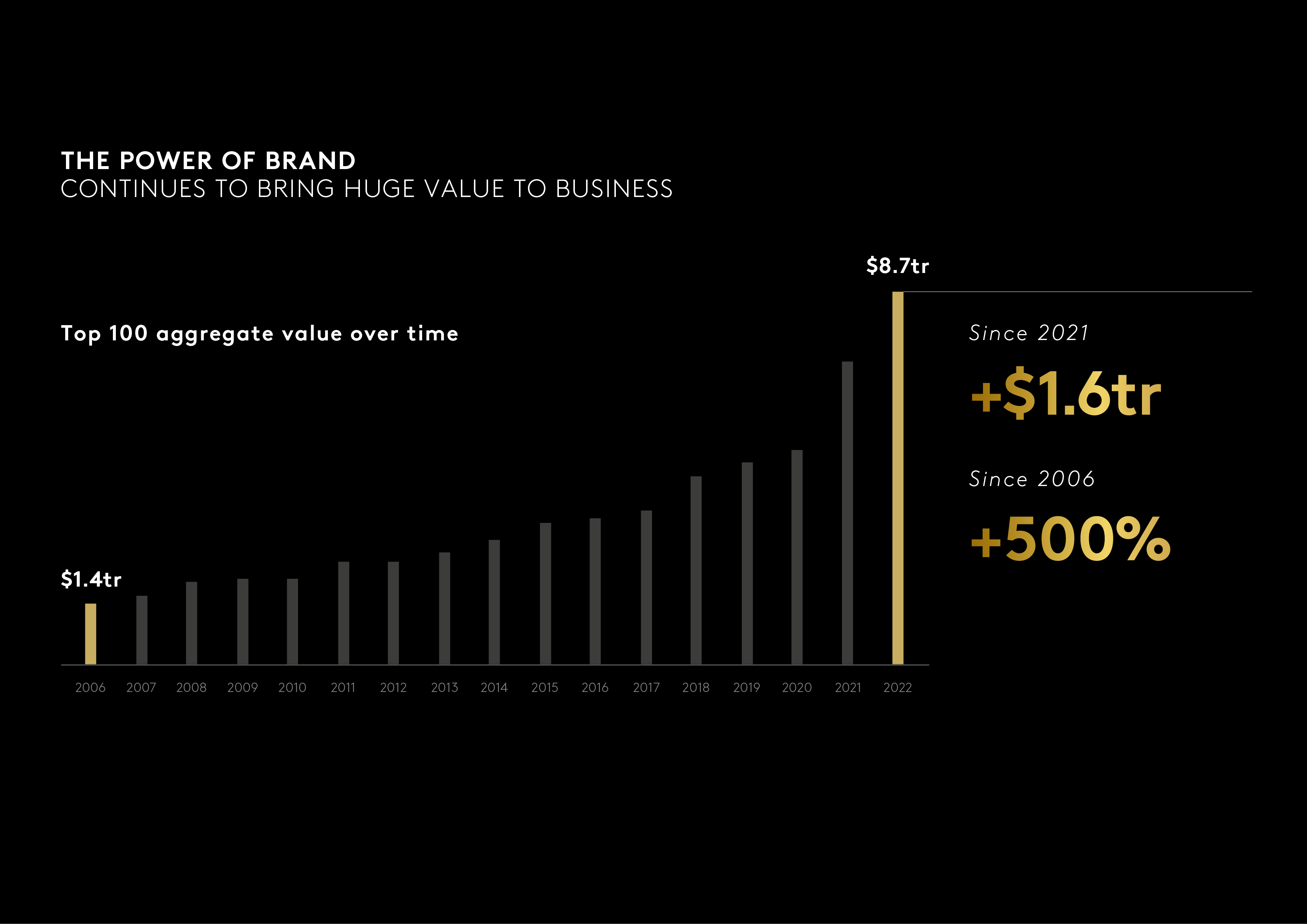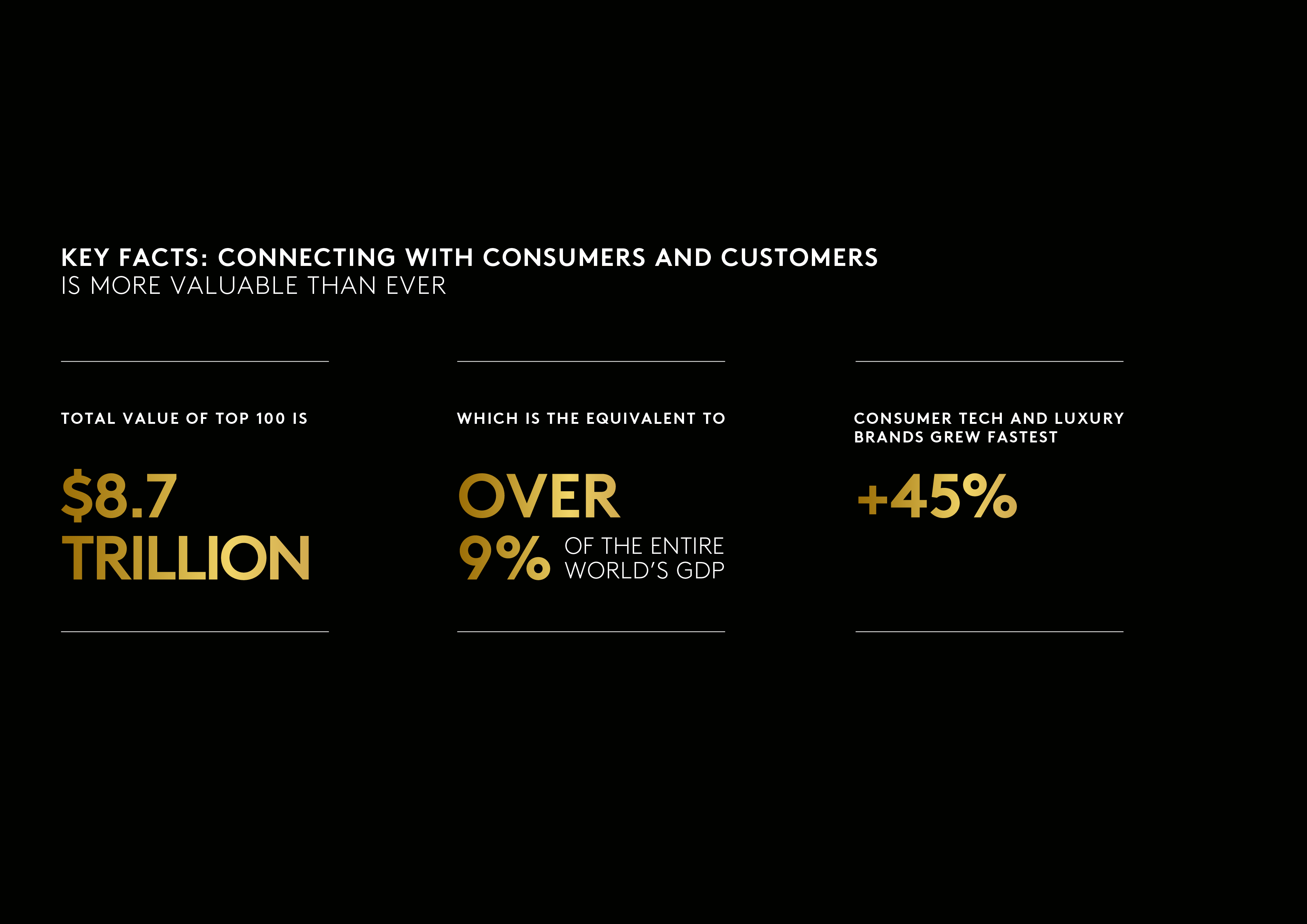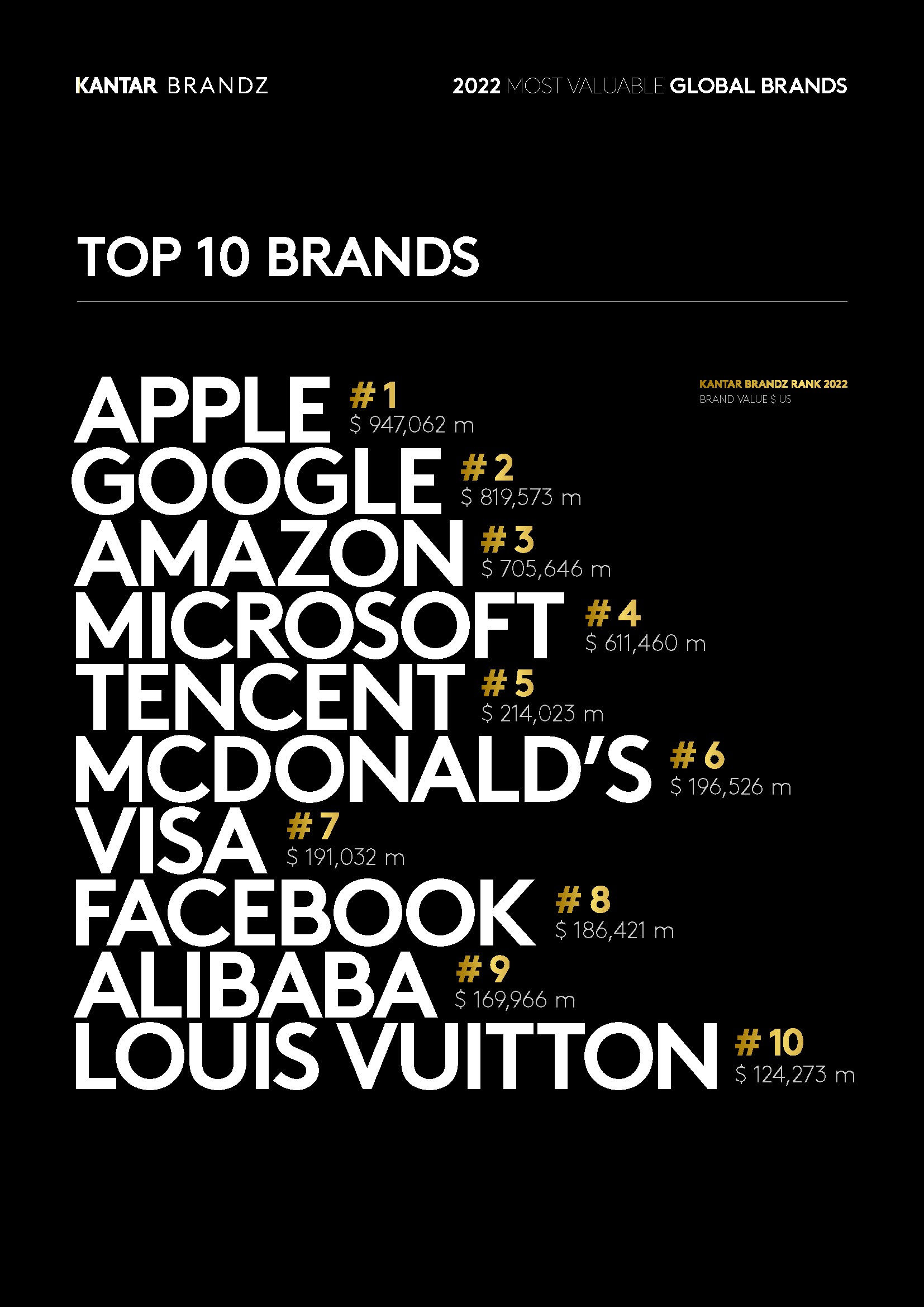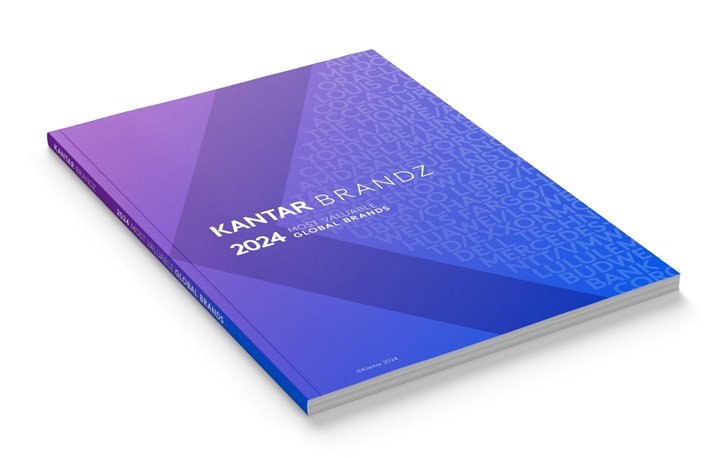Editor's note: This article was originally created for a partner content campaign with the commercial department of the Financial Times.
For consumers, 2022 may well be another year of instability. Pandemic recovery has given way to soaring inflation, leaving retailers and customers rushing to cut costs. Even during these turbulent times, however, many of the world’s best-known companies have continued to see success. Analysis from our global BrandZ report reveals that, despite ongoing economic pain, the world’s 100 most valuable brands have seen their worth skyrocket over the past 12 months. During 2021, the worth of those brands grew from $7.1 trillion to $8.7 trillion, equivalent to some 9% of global gross domestic product.

To identify the top 100, Kantar BrandZ uses a brand valuation methodology grounded in quantitative consumer research and financial analysis to quantify a given brand’s ability to impact customer behavior and create future value. Its brand contribution score is calculated according to whether consumers find a brand meaningful (meeting functional and emotional needs in relevant ways); different (distinctive or trendsetting); and salient (if it comes to mind quickly).
Kantar BrandZ data show time and time again that the power of successful brands lies in the strength of the connections they build with consumers. The foundations of such relationships are usually linked with specific values associated with the brand itself, whether that’s glamour and exclusivity or rugged dependability. Nowhere can this be seen more clearly than with luxury labels, many of which are thriving as customer aspirations dovetail with clear brand identities.

Kantar’s global BrandZ report found that luxury brands saw a year-on-year growth of 45% in 2021. Louis Vuitton became Europe’s most successful brand globally in any sector, with a 64% growth in brand value, while Cartier saw 88% growth and Hermès experienced 73% growth. On paper, brands such as Louis Vuitton, so strongly linked with travel, could have seen a downturn as the COVID-19 pandemic closed borders. Instead, the brand’s strong visual imagery and the strength of already well-established consumer connections allowed it to break new ground.
As the economy gets squeezed, people have less cash in their pockets. They’re less likely to invest in a brand if there's not a reason to do so. How can you justify a price premium? It comes back to brand, and it comes back to giving your brand a meaning that other brands don't have. Louis Vuitton deploys a collection of strong visual cues that are clearly and consistently used in the brand's marketing. Those small advantages can be hugely valuable.
Companies in other sectors are increasingly learning from luxury labels regarding the power of strong consumer connections, alongside exclusivity. Kantar’s global BrandZ report also saw tech giants including Google and Amazon build their brand value scores significantly over the past year. Apple was found to be the world’s most valuable brand, worth a staggering $947 billion with year-on-year growth of 55%.

This stratospheric rise to the top of the rankings has been at least partly fueled by premium pricing, which has boosted profits and company value in turn. Commenting on the results, Prof Andrew Stephen, L'Oréal Professor of Marketing and Research Dean at the University of Oxford’s Saïd Business School shared, “Tech brands such as Apple are undoubtedly luxury brands. Across all sectors, some brands will always position themselves at the high end of the market. Luxury has always been about that price premium.”
As consumers make decisions at a time of financial scarcity, brands will be pushed further to justify any higher price points, meaning that creating strong connections via savvy marketing investment will become more important than ever. “And what Apple does, as a brand, is play on its high-end design aesthetic,” said Stephen. “It convinces [consumers] that Apple is at the forefront of innovation – constantly inventing new things, even very technical things – and that is part of their DNA as a luxury brand. If you think of luxury as something worth paying a premium for, then Apple has convinced customers that their innovation is worth that premium.”
It is those key brand characteristics that will make all the difference to consumers spending their hard-earned cash. It is important that brands are able to conjure meaningful and differentiating associations, because such positive connections can make all the difference, come decision time.


